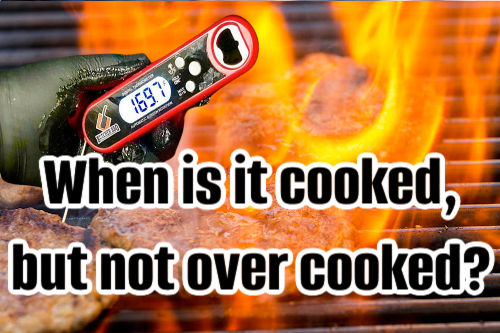
Mastering Meat Temperatures: The Key to Mouthwatering BBQ
As a two-time World BBQ Champion, the team at Butcher BBQ knows a thing or two about the art of grilling and smoking. One of the most critical aspects of achieving mouthwatering, competition-worthy results is understanding and controlling the internal temperatures of your meats. Whether you're cooking up juicy steaks, fall-off-the-bone ribs, or a perfectly smoked brisket, getting the internal temperature just right can make all the difference.
The Science Behind Meat Temperatures
The internal temperature of meat is crucial because it directly affects the texture, flavor, and overall quality of the final product. As meat cooks, the proteins within it begin to denature and coagulate, causing the muscle fibers to tighten and the juices to be released. The higher the temperature, the more the proteins denature, leading to a firmer, drier texture.
On the other hand, undercooking meat can result in a chewy, unappetizing texture and potential food safety issues. That's why it's essential to use a reliable meat thermometer to ensure your meats reach the optimal internal temperature for your desired level of doneness.
Essential Tools for Measuring Meat Temperature
When it comes to measuring internal temperatures, there are a few different types of meat thermometers to choose from. The most common are:
Instant-Read Thermometers
These handy tools provide a quick temperature reading, making them perfect for checking the doneness of steaks, chops, and other thin cuts of meat.
Digital Probe Thermometers
These thermometers feature a long, thin probe that can be inserted into thicker cuts of meat, like roasts or briskets, to monitor the internal temperature as they cook.
Wireless/Remote Thermometers
These advanced thermometers allow you to monitor the temperature of your meat from a distance, making them ideal for long, low-and-slow cooking sessions like smoking a brisket or pork shoulder.
Regardless of the type of thermometer you choose, it's crucial to use it correctly. Make sure to insert the probe into the thickest part of the meat, avoiding any bones or fat pockets, for the most accurate reading.
Ideal Internal Temperatures for Different Meats
The ideal internal temperature for your meat can vary depending on the type of meat and your personal preference for doneness. Here are some general guidelines:
Beef
- Rare: 125°F (52°C)
- Medium-Rare: 130-135°F (54-57°C)
- Medium: 140-145°F (60-63°C)
- Medium-Well: 150-155°F (66-68°C)
- Well-Done: 160°F (71°C) and above
Pork
- Chops, Ribs, and Pulled Pork: 145°F (63°C)
- Ground Pork: 160°F (71°C)
Poultry
- Chicken and Turkey Breasts: 165°F (74°C)
- Whole Chicken or Turkey: 180°F (82°C)
Lamb
- Rare: 130-135°F (54-57°C)
- Medium-Rare: 140-145°F (60-63°C)
- Medium: 150-155°F (66-68°C)
- Medium-Well: 160-165°F (71-74°C)
Fish and Seafood
- Fish: 145°F (63°C)
- Shrimp, Lobster, and Scallops: 145°F (63°C)
Tips for Achieving Perfect Internal Temperatures
Reaching the ideal internal temperature is just the first step. To ensure your meats are cooked to perfection, consider these additional tips:
Resting the Meat
After cooking, it's essential to let your meat rest for 5-15 minutes before slicing or serving. This allows the juices to redistribute throughout the meat, resulting in a juicier, more flavorful final product.
Carryover Cooking
Remember that your meat will continue to cook even after you remove it from the heat source. This "carryover cooking" can raise the internal temperature by 5-10°F (3-6°C), so be sure to account for this when determining when to pull your meat off the grill or smoker.
Using Butcher BBQ's Rubs and Injections
To take your meats to the next level, try using Butcher BBQ's award-winning rubs and injections. Our carefully crafted blends of spices and seasonings can help you achieve the perfect balance of flavor and texture, while our injections can help keep your meats juicy and tender.
Common Mistakes to Avoid
While monitoring internal temperatures is crucial, it's also important to be aware of some common pitfalls to avoid:
Overcooking or Undercooking
Relying solely on time or appearance can lead to over- or undercooking your meats, resulting in a disappointing final product. Always use a reliable meat thermometer to ensure your meats reach the ideal internal temperature.
Neglecting to Rest the Meat
Failing to let your meats rest after cooking can cause the juices to run out, leaving you with a dry, tough final product. Be sure to factor in resting time when planning your meal.
By mastering the art of controlling internal meat temperatures, you'll be well on your way to creating mouthwatering, competition-worthy BBQ every time. So, trust your Butcher BBQ champion-approved techniques, and get ready to impress your friends and family with your grilling and smoking prowess.




